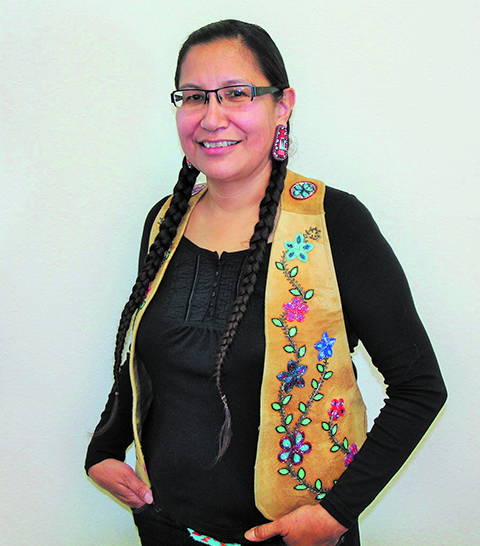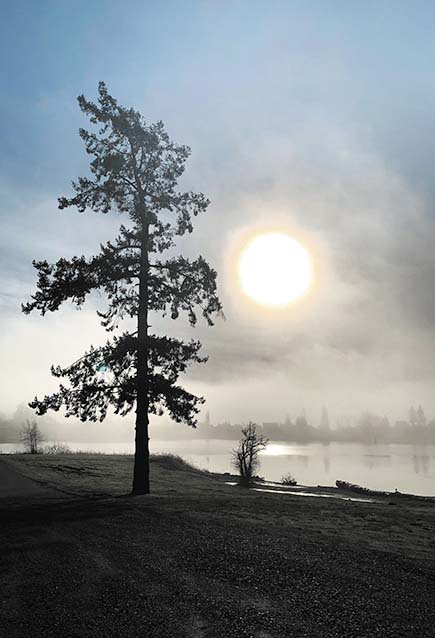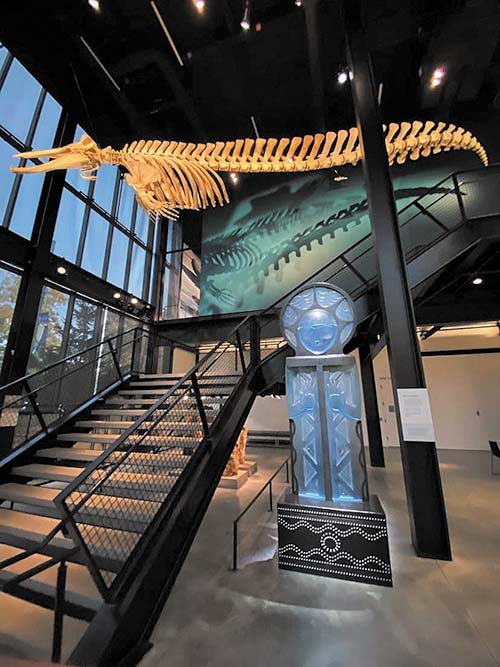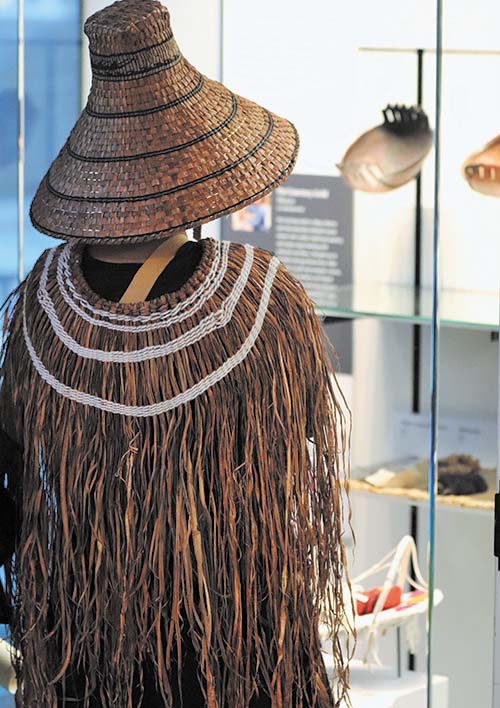Please follow the link to download the January 22, 2022 issue of the syəcəb
Author: Kim Kalliber
Insight from Idle No More co-founder Sylvia McAdam
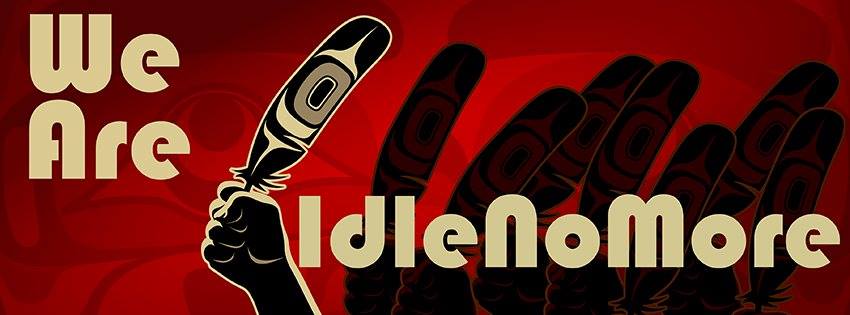
By Micheal Rios, Tulalip News
Sylvia McAdam (Saysewahum) has garnered respect from around the globe as a cofounder of the international movement Idle No More. Hailing from the Treaty 6 lands of modern day Canada, she’s travelled the continent to support countless First Nations and Native American tribes in their efforts to defend and protect sacred lands, waters, and animals.
Sylvia is a citizen of the Cree Nation and proudly holds a Juris Doctorate (LL.B) from the University of Saskatchewan and a Bachelor’s of Human Justice (B.H.J) from the University of Regina. She is a recipient of the Carol Geller Human Rights Award, Foreign Policy’s Top 100 Global Thinkers Award, 2014 Global Citizen Award, and has received several eagle feathers from Indigenous communities that she holds dear. A law professor at the University of Windsor, Sylvia is routinely asked to speak on her experiences defending Indigenous rights and participating in Indigenous-led protest movements.
Idle No More started in November 2012, among Treaty People in Manitoba, Saskatchewan, and Alberta protesting the Canadian government’s dismantling of environmental protection laws, endangering First Nations who live on the land. Born out of face-to-face organizing and popular education, but fluent in social media and new technologies, Idle No More has connected the most remote reserves to each other, to urbanized Indigenous people, and to the non-Indigenous population.*
Led by women, and with a call for refounded nation-to-nation relations based on mutual respect, Idle No More rapidly grew into an inclusive, continent-wide network of urban and rural Indigenous working hand in hand with non-Indigenous allies to build a movement for Indigenous rights and the protection of land, water, and sky.
Because colonization has dramatically caused the heartbreaking loss of Indigenous languages, customs and traditional lifeways, Sylvia uses the oral tradition of her people to share her dream to revitalize Indigenous nationhood. It is Sylvia’s dream, shared by many Indigenous peoples, that freedom, liberation and self-determination will lead Indigenous peoples away from the pain of genocide and colonialism.
Following a riveting presentation at the World Issues Forum, she honored See-Yaht-Sub staff with a sit-down interview to discuss several issues that are of utmost importance to Indigenous peoples and communities.
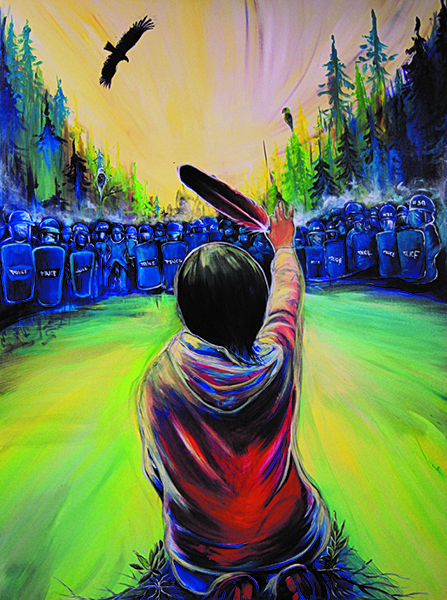
SYS: During your presentation you mentioned as Indigenous peoples we shouldn’t identify as an ‘environmentalist’ or ‘activist’, but instead view ourselves as defenders of our homeland. Why is that?
“When you begin to identify as an environmentalist or activist there’s a fear that arises because those terms can be associated with economic terrorists. The fear is rooted in the belief that environmentalism and activism affect the economy. That’s part of it, the other part is activism and environmentalism infers that there is no inherent connection to the land; you just show up and protest. However, when it comes to Indigenous people doing this kind of work, their connection, attention, and investment to the land is much different. Our history is written on the land, our ancestors are buried here, that land is our home. So we are defending and protecting our home. Being defenders of our homeland shifts the thinking, as it should, because our connection with the land is unique.”
SYS: Viewing ourselves as defenders of our homeland also unites us, regardless of citizenship as Native Americans or First Nations people. As defenders of our homeland we become a common people with a set of common goals, right?
“Absolutely. When you are born you are born not only as a human being, you are born into lands. When we go home we have a very clear set of lands that we are born into and we have a responsibility and obligation to protect those lands. That’s what I continue to do every day and that’s why I tell people, ‘when you know your lands you will know your relatives.’ I’m not just talking about the human relatives, I’m talking about the land, the plants, and all the animals, the flyers, the crawlers and the swimmers. Those are all our relatives and right now they have no agency to defend and protect themselves. That’s where we need to step up because the forces that threaten our land and humanity are very identifiable right now. Those forces are the extractive corporations that are going into our lands, almost in a frenzy, to take the very things we need to sustain us.”
SYS: Some of the forces that continue to threaten Native culture and Indigenous identity are more covert than others. You mentioned the term ‘ethnocide’ earlier. Can you explain what ‘ethnocide’ is?
“We speak about genocide, but people forget about ethnocide. Ethnocide is the death of the way of being of people; the things that we need to carry us on as a people. Ethnocide is the taking of our trees, the taking of our water, and
the taking of our plants. What then do we have to carry our ceremonies on? The ceremonies are pivotal and integral in who we are as a people. If you could not have trees to make your canoes, what then? If there are no trees then there are no forests to harvest from. If the waters and oceans are poisoned and you can no longer perform your ceremonies, then what happens to your songs and the language? How does your culture live on? You lose who you are as a people. That’s ethnocide.”
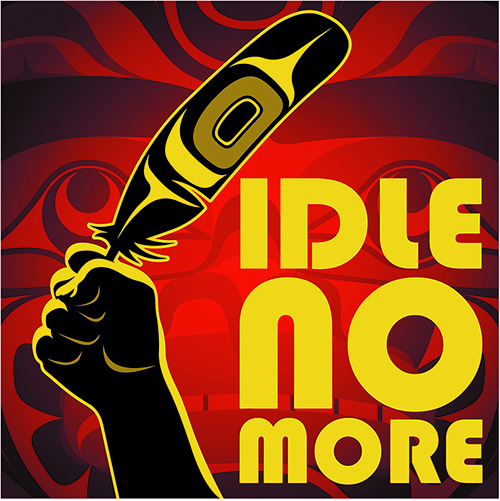
He explains, “Going to my first rally in 2012, I needed a poster to bring along. Knowing that the fist and feather with its image of strength and spirituality was quickly becoming the symbol of the movement, I thought it would be fitting if I created one in the formline style indicative of the west coast. I quickly drew up this image at my dining room table and then put it on my Facebook page and it suddenly went viral. Soon, this image appeared on poster boards, buttons, t-shirts, stickers and banners. My feeling was that I wanted this image to go out into the world and find a life of its own. It did.”
SYS: The idea of disenrollment based upon blood quantum is gaining traction amongst many tribes. It’s based on a system of thought not of our own, but instead is passed down from colonization. What are your thoughts on disenrollment?
“It’s so unfortunate because it seems we’re always in the realm of inadequacy. We’re always inadequate; its either we have too much culture or not enough culture. We’re always in that measure of inadequacy. Ultimately, we can turn to our ancestors to see we never throw away our relatives. We never throw them away, even the ones we have come to adopt. It’s against our culture and against our natural laws as Indigenous peoples. At the end of the day, if you can demonstrate and show to me where your lands and your relatives are, then doesn’t that speak for itself? Every child, every original peoples’ child is born into lands. They have an inherent right to protect and defend those lands. No human can take that away from them.
If you are dis-enrolling children, then you are taking away their inherent obligation and jurisdiction into the lands they are born into. No human being has that right. It’s against our laws to do that. For every Indigenous child born it’s the duty of the parents to make sure that child is connected into the land, so that when they grow up they will defend and protect their relatives who don’t have agency to defend themselves.”
SYS: What astounds you most when you look back at all you’ve experienced and achieved over the past decade with Idle No More?
The amazing courage of grass-roots people when they set their minds to things. That’s what blows me away. The courage and determination of so many individuals who unite and come together for a common goal is what drives Idle No More. On a global scale, we got a message from the Amazon, from the original peoples there, and they told us they were trying to stop the development of a dam. While defending their homeland they were opposed by paramilitary brought in to keep them away from the dam site. On one occasion they were standing there with their spears and bow and arrows chanting ‘Idle No More!’ while the paramilitary pointed their guns at them. They told us Idle No More was their battle cry.
So when I start to feel discouraged or overwhelmed I remind myself of these stories to remember I’m not alone. I have to be a voice for those who can’t speak for themselves and continue this work. If I don’t, then what am I going to tell my grandchildren when they ask me, ‘what did you do to protect and defend our culture and homeland?’ I want to be able to tell them I did everything that I could. That’s why I’m here.”
*source: http://www.idlenomore.ca
Tsunami & fog advisories over MLK weekend
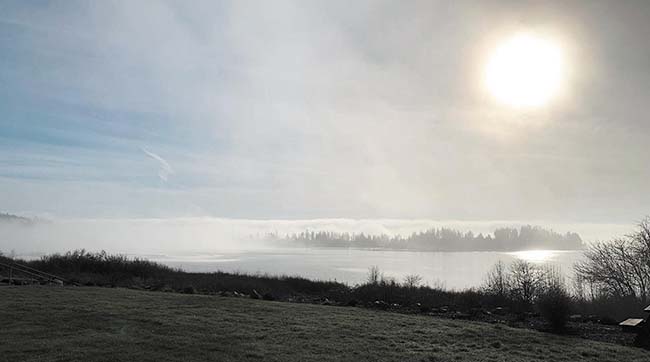
By Kalvin Valdillez, Tulalip News
Following the two-week holiday snow storm that led us into the new year, the Pacific Northwest’s forecast has consisted of nearly all the different types of weather since. From our typical overcast and rainy days to clear sunny skies, Washington state residents have experienced just about every type of precipitation imaginable as well as felt the various degrees in temperature, ranging from below freezing to as warm as the low 50’s.
On an early evening last week, many people were compelled to reach for their smart phones and open their camera apps to snap a shot of the sky, which was a scene filled with gorgeous and vibrant colors of pink, purple, blue and golden hues. Multiple areas throughout the state also dealt with extreme flooding as this winter’s snowfall began to melt after steadily compiling for several days in a row.
Starting out, 2022 has already seen snow, rain, hail and sunshine, not to mention cloudy and windy days. And over the three-day weekend, in which we take to time to honor the legacy of Dr. Martin Luther King, local meteorologists predicted that we were set to have our first encounter with some morning fog throughout the Puget Sound region this year.
Although the weather specialists did predict fog in the forecast, they also thought it would only occur in the early hours of Saturday January 15, and sunshine would prevail for the rest of the long weekend. As we know, however, that was not the case as heavy condensation hung in the air, and coastal communities experienced limited visibility as a dense fog advisory was put into effect, extending through both Sunday and MLK day.
Amidst the fog and the mist, many of us woke to urgent alerts and notifications on Saturday morning, stating that we, along with California, Oregon, B.C., and Alaska, were under a tsunami advisory. The underwater Hunga Tonga-Hunga Ha’api volcano erupted in the South Pacific on the evening of January 14, covering the isles of the Tonga nation with ash and smoke, as reported by CNN. The tsunami waves caused from the volcanic eruption first hit the shores of Tonga, flooding several homes of the island community.
The initial waves were reportedly several feet high and traveled thousands of miles across the Pacific Ocean and eventually reached the Salish Sea on Saturday morning. The National Weather Service warned local residents to stay away from the beaches and coastlines as the tsunami waves arrived, claiming that the waves could be as big as three feet and could potentially drag people out to sea.
At Tulalip, the reservation was covered with a thick layer of fog. It was suggested on Tulalip News Facebook that the fog was brought on because of the volcano eruption and subsequent tsunami waves. But as it turns out, the two bouts of weather, which both called for advisories, were indeed separate.
The eruption did in fact impact the fog. However, an 820-mile-per-hour shockwave traveled nearly 6,000 miles to our local region and actually cleared some of the fog temporarily, and for a moment blue skies and sunshine could be seen in certain areas of the northwest.
The effects of the volcano eruption and tsunami waves have yet to be seen and many are wondering if it will impact the climate, sea-level rise or marine life. Scientists and specialists are still studying the natural phenomenon. And with the recent tsunami threat, many coastal communities are updating their tidal wave and evacuation plans.
With the somewhat extreme and unpredictable weather occurring throughout this winter, it is important to stay up-to-date with the current forecast. Be sure to follow the National Weather Service on your preferred social media platform and set-up a few weather alerts on your phone to be best prepared for whatever weather may come our way.
You can also text STORM to 844-962-3985 to stay up to date on the latest information about storms and emergencies on the Tulalip Reservation.
Commemorating the 1855 Treaty of Point Elliott
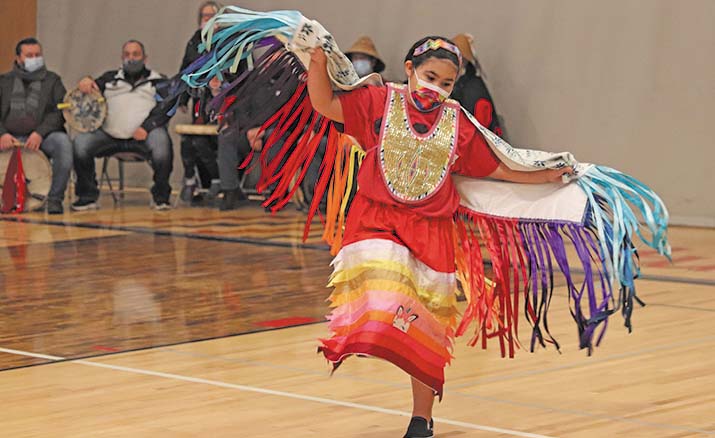
By Kalvin Valdillez, Tulalip News
“At this time, we remember and acknowledge our ancestors who signed the treaty,” said Tulalip Elder, Inez Bill. “We reflect on the importance of that treaty – who we are as a people and how to continue our way of life – a commemoration of the signing of the 1855 Treaty of Point Elliott that affected the coastal tribes.”
January 22nd marks 167 years since tribal leaders across the northern Puget Sound region gathered at the location that is presently known as Mukilteo. A historic day in which representatives from various tribes, bands and villages, including the people of Snohomish, Lummi, Swinomish and Suquamish, met with Washington Territory Governor Issac Stevens to negotiate and sign a document that would become known as the 1855 Treaty of Point Elliott. Close to 5,000 Coast Salish people were in attendance, and the negations required two translators – one translating English to Chinook Jargon and the other interpreter translated the Chinook Jargon into the traditional languages of the various tribes.
“We honor the good intentions our ancestors had for us in negotiating and signing the treaty,” stated Lena Jones, Tulalip Elder and Education Curator of the Hibulb Cultural Center. “I encourage young folks to listen to their elders when they talk about the treaty and our sovereignty. Understanding the treaty will help you understand the influence it has in every aspect of our lifeways.”
With their future generations in mind, the tribal leaders ceded upwards of 5 million acres of ancestral land to the United States government for white settlement. Today, that enormous amount of land currently makes up Washington’s King, Snohomish, Skagit and Whatcom counties. The treaty established the Tulalip, Port Madison, Swinomish and Lummi reservations, and thereby acknowledged each tribe as a sovereign nation. In exchange for ceding such large portions of land, the tribes reserved the right to fish at usual and accustomed grounds and stations, as well as the right to hunt and gather on open and unclaimed lands.
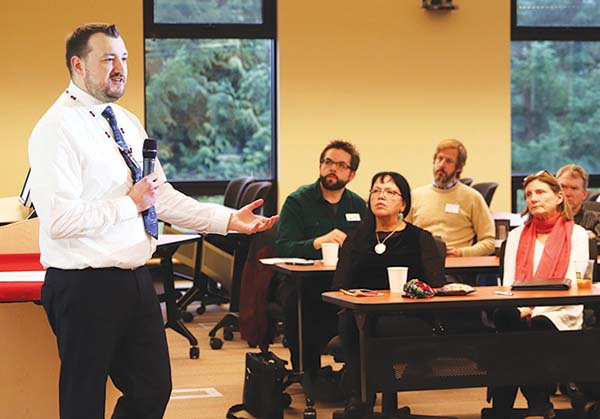
“Treaty rights are an inherent right,” explained Ryan Miller, Tulalip Tribes Director of Treaty Rights and Governmental Affairs. “Treaty rights were not given to tribes. It’s a common misconception that the government gives Native Peoples special rights. That’s the exact opposite of how it works. Tribes are sovereign nations, they give up rights and they retain rights. Treaty rights are rights that are not given up by tribes, and they’re upheld by the federal government as part of their trust relationship with the treaty tribes. The tribes’ right to self-govern is the supreme law of the land. It’s woven into the U.S. constitution as well as many legal decisions and legislative articles. The constitution says Congress has the power to make treaties with sovereign nations, and that treaties are the supreme law of the land.”
Tulalip Fisherman, Brian Green, expressed, “The treaty is literally my livelihood. We fight for our rights every day – fighting to keep our treaty rights. I want my kid’s kids to come out here and be able to exercise their treaty rights. Not everyone has to be a fisherman, but it should be there if they want to exercise it.”
Tribal communities faced difficult years after the signing of the treaty, including the boarding school era. Fifty years after the signing of the 1855 Treaty of Point Elliott, the Tulalip Indian Boarding School opened, one of many Indian boarding schools throughout the country. During this dark era of American history, Native children were forcibly removed from their families and had to attend these schools and learn how to live the new colonized lifestyle.
The institutions were established to ‘civilize’ the Indigenous population. But while at these boarding schools, the kids were often punished, physically and mentally, for speaking their traditional language and practicing their spiritual and cultural teachings. Many children died as a result of the abuse, while the ones who made it through these atrocities often, and unknowingly, passed on their traumas to the next generations, causing vicious cycles of abuse and destructive coping mechanisms to deal with that abuse, throughout the years.
During this era, the U.S. Government also outlawed traditional practices and spiritual ceremonies that took place on these lands since time immemorial. Coast Salish tribal members could not sing their songs, perform their dances or speak their ancestral languages, and therefore could not pass those teachings to the next generations. Longhouses were demolished and modern-day houses were erected on the reservations. The people who inhabited, lived-off and cared for this land for ages were to learn the ways of agriculture and become farmers.
The descendants of the signatories of the 1855 Treaty of Point Elliott were in the middle of experiencing the horrors of forced assimilation when the last hereditary chief of the Snohomish, William Shelton, stepped in to save his people’s heritage, culture and way of life. In 1912, persistence paid off when he convinced the Tulalip Superintendent and the U.S. Secretary of Interior to build a longhouse along the shores of Tulalip Bay.
William created a way for the tribes to practice their traditional lifeways every winter by informing U.S. Government officials that the people would be celebrating and commemorating the anniversary of the treaty once a year at the longhouse. This allowed tribal elders and wisdom keepers the opportunity to teach the younger generations about their culture, which seemed to be slipping away at an alarming rate due to colonized efforts. The annual gathering became known as Treaty Days, a yearly potlatch that often extends into the early morning of the following day.
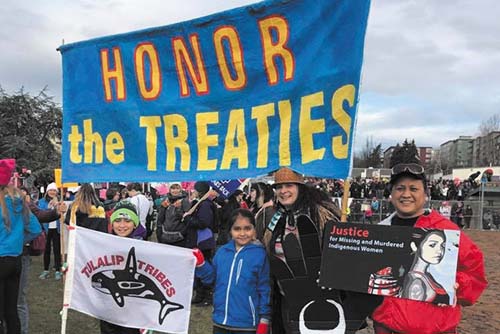
Treaty Days is an event that tribal members across the region look forward to every year. Although the original longhouse, which Shelton convinced the government to build, was replaced in the sixties, people met at the historical location every January 22nd for over 100 years after the first Treaty Days ceremony took place. Unfortunately, due to the COVID-19 pandemic, tribal members have not been able to gather to commemorate the treaty for the past three years. However, many tribal families still take the time to honor, reflect, study and pass on the knowledge of the treaty to the next generations at home, until it is safe to convene once more in large numbers at the smokehouse.
“I think that we have the responsibility to revisit the treaty all the time, so we know we are keeping our younger people abreast and informed as much as possible,” said Ray Fryberg, Tulalip Elder and Hibulb Cultural Center Tribal Research Historian. “We gave up a lot in the treaty to keep our sovereignty – to be able to determine our own future and our own direction in our tribal path. And also just living on the reservation, and protecting those rights that were reserved for us, as well as the spiritual and cultural way of life.”
Added Lena, “The treaty accepts the fact that our people have the right to organize themselves, protect our way of life, and care for our resources. Our tribes have significant control of, and rights to, important natural resources such as fishing. As our language and culture become stronger, we are able to help others understand how to take care of the earth and one another.”
The 1855 Treaty of Point Elliott is currently on display at the Hibulb Cultural Center as a part of their The Power of Words: A History of Tulalip Literacy exhibit. For more information, including the most up-to-date COVID guidelines and restrictions, please contact the museum at (360) 716-2600 or visit the Hibulb Cultural Center’s Facebook page.
January 15, 2022 syəcəb
Please follow the link to download the January 15, 2022 issue of the syəcəb
Desperate for a family daytrip? New Burke Museum is a prime destination
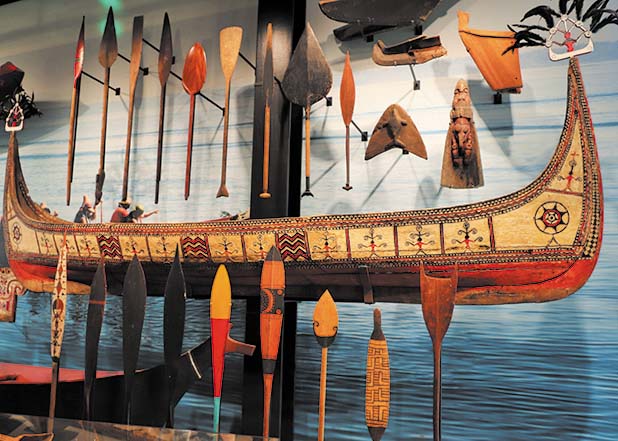
By Micheal Rios, Tulalip News
“The Burke Museum stands on the lands of the Coast Salish peoples, whose ancestors resided here since time immemorial,” said Burke executive director Julie Stein to a crowd of 400+ people representing tribal nations from all across the Pacific Northwest. “Many Indigenous peoples thrive in this place. Part of that history is embedded in the museum, allowing us to move forward in a good way.
“You all are the first to be invited to tour and experience the all-new Burke Museum,” continued the museum’s executive director. “We are truly honored by your presence. The Burke recognizes our colonial legacy, and we promise to dedicate ourselves to learning from communities and building a more ethical and collaborative future together.”
Julie’s words were direct and heartfelt as she greeted hundreds of Native American visitors who convened for the Burke Museum’s Indigenous Preview in late 2019. Only a matter of months after that glorious day, the global landscape would be upended by a coronavirus. The museum, along with countless other establishments worldwide, would soon close out of an abundance of caution.
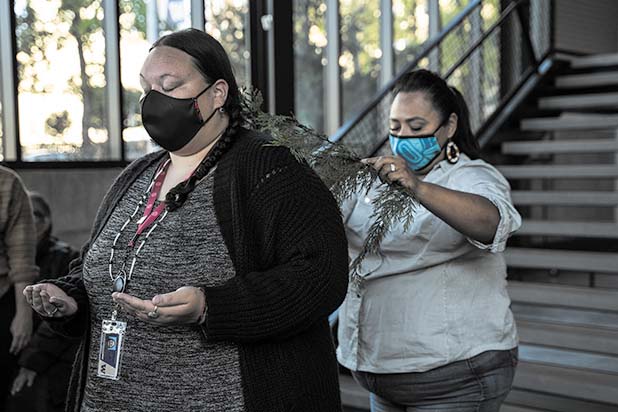
Now, more than two years after the Indigenous Preview that created legendary memories, the Burke has reopened and welcomes Tulalip families to visit. Located on the University of Washington campus, it’s a 45-minute drive from the Reservation to the $99 million, 113,000-square-foot facility dedicated to preserving creative, complex knowledge. As a thriving cultural resource officially reopened to the public, the Burke staff are excited to host local Native culture-bearers from the greater Tulalip community.
Among the Burke’s staff is Tulalip’s own Mary Jane Topash. She spent eight years at the Hibulb Cultural Center before transitioning to the Burke as its Assistant Director for Cultural Education Initiatives. The UW campus is a home away from home for Mary Jane as she earned both her Bachelor’s and Master’s degrees while dawning the purple and gold.
In honor of the Burke’s collaborative spirit with Indigenous communities, Mary Jane invites all Tulalip families to visit the redesigned museum.
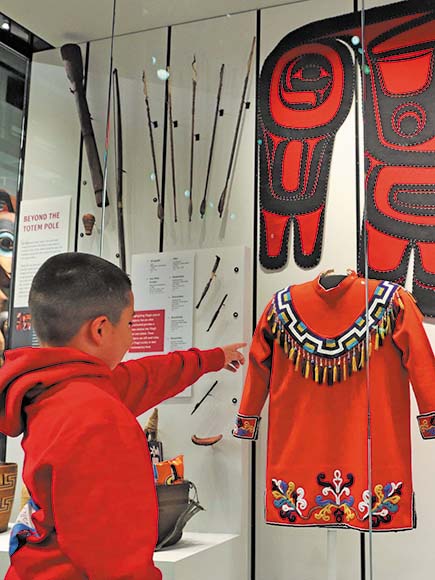
“Tribal members and their families should visit the new Burke because it’s our only natural history museum in the state, but if that isn’t enough then you should know the Burke isn’t a typical museum. It’s a place we can actually see ourselves and related tribal cultures represented and showcased in the best kind of way,” explained Mary Jane. “It’s an opportunity to learn about fun and excited things beyond just our tribal history, too, like the prehistoric era. We have Dinosaurs!
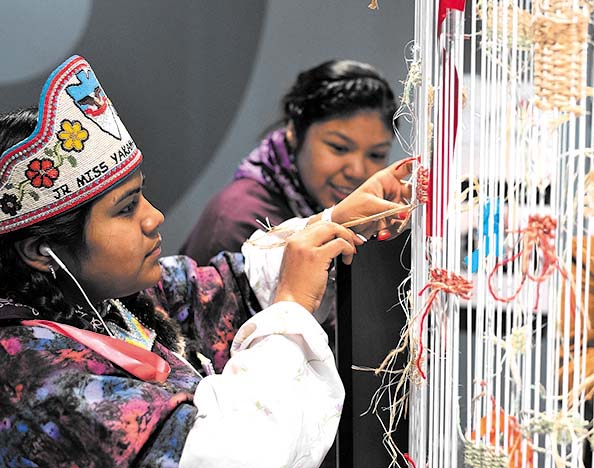
“We’re still in a pandemic, so I know circumstances may be difficult for some of our people, especially families with multiples kids in the house asking questions that seem to have no answers, but that’s why the Burke is a prime daytrip destination,” she continued. “You can escape to the museum and be immersed in imagination. It’s a perfect family outing for children because it gives them a different outlet for learning and we can answer so many of their questions. Plus, the Burke offers family-based activities such as interactive crafting and scavenger hunts.”
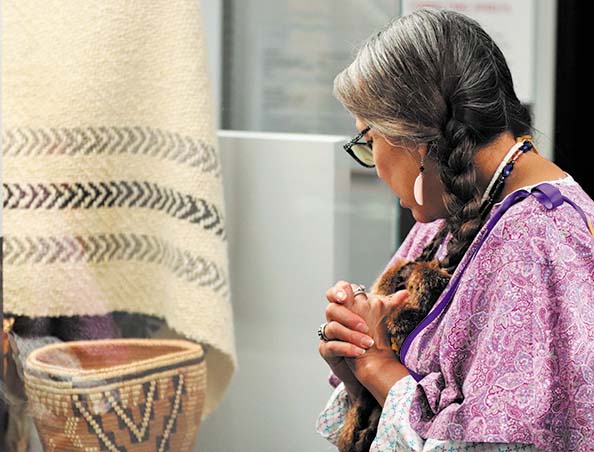
Nearly a decade’s worth of planning and consultation went into the unique redesign of the natural history museum that boasts a massive 16 million object collection. An emphasis on transparency and treating Native cultural artifacts with their proper respect, while acknowledging their rightful creators, is sure to be a conversation starter for museum patrons as they peruse the Culture is Living gallery. From intricate weaving creations to generations old traditional regalia to a truly stunning dedication to canoe journey, Northwest Native artistry and craftsmanship is proudly displayed.
According to the Burke, the Culture is Living gallery breaks down traditional museum authority and brings the expertise and knowledge of communities to the forefront. Cultural objects aren’t tucked away on the shelves. They are alive, embodying the knowledge, language, and stores of people and cultures.
“We wanted to share how diverse our Indigenous cultures are and share the fact that we are still here,” said Sven Haakanson (Alutiiq), curator for North American anthropology. “To us, the cultural pieces we have on display are living. We are representing a hundred-plus cultures in our Culture is Living gallery and to pay them their proper respects we interwove elements of Earth, air, water, our ancestors, children, and community.
“As a curator, one of the things I’m most proud of is we put the Native languages first on every item. Over the next decade, I’m hoping to work with our local tribes to get more item descriptions written in their languages and to add quotes from those communities telling us what the item’s story is from their perspective,” continued Sven.
No trip to the Burke is complete without sampling the palette enriching food cooked up at Off the Rez café. Located inside the Burke, Off the Rez is a permanent outpost spawned from Seattle’s first and only Native food truck. Menu hits include handmade fry bread with choice toppings, braised bison Indian tacos, and smoked BBQ pulled pork wild rice bowls.
It’s a new kind of museum with a whole new way to experience our world. The Burke is located on the UW’s Seattle campus and is free to all visitors on the first Thursday of every month. You can expect to be blown away by the attention to detail the dedicated curators used in setting up each and every item in the multiple galleries. And with Native voices prominently featured, there is sure to be an opportunity for learning and reflection.
“The inclusivity is awesome!” shared Stephanie Masterman (Tlingit) of her Burke experience. “Yes, there are artifacts dating back hundreds of years, but there is so much contemporary art, too. So many young Native artists have works included among the galleries. The voice and presence of the future generations we always talk about is definitely represented.”
Due to King County restrictions, proof of vaccination for visitors ages 12 and older is required for museum admission. Burke staff also encourage pre-purchasing your museum tickets online at www.burkemuseum.org to make your trip as seamless as possible. Current museum hours are Tuesday – Sunday: 10AM – 5PM (Closed on Mondays). For more information please call (206) 543-7907
Tulalip Tribes COVID-19 Case Update, Jan 12
Carrying on culture through the power of storytelling

By Shaelyn Hood, Tulalip News
Storytelling is a cultural tradition passed through generations of Native American people. These stories speak of legends, folktales, and fables. They also have the ability to recount the history of our people, rituals, relate to everyday life, and educate children about cultural morals and values.
Luckily today, many traditional stories are now readily available in books, various audio formats, and videos. But before these technological advances, they were carried on through oral communication. Today if you were to find the written records of historical events and stories, they would contain more visual aspects than narration. Every time a story is shared from one generation to another, it is preserving Native culture, cultivating the Native languages, and honoring our ancestors before us.
Language is one of the most important aspects of any culture. Language paves the way so that people can communicate with one another, build relationships, and create a sense of community. Like many other tribes across the nation, our language and having the freedom to use it is a privilege that our ancestors fought so desperately to keep.
Tribal stories often reflected the land they were on at the time, like hunting routes, local plants, how tribes came to be, family lineage, their spiritual leaders and elders, etc. Therefore, if you listen to stories told by the Inuit of Alaska, their stories may differ from the Seminole of Florida.
In other ways, storytelling acted as a tool. It is how Native Americans maintained their symbiotic connection to the earth and relationships with animals. As they explored various parts of their land, the language and verbal use of storytelling helped them to live off the land, survive their environment, and how to best utilize the natural resources around them. Some of the themes surrounding storytelling were about creatures, fantasy and realism, places, tricksters, the creator, heroes, society, rites of passage, and disasters.
Most of these stories were shared through talking circles, similar to events that the Hibulb Cultural Center puts on. On January 8th, 2022, a small group gathered to listen to Maria Rios share this tradition. She recited stories both in English and in Lushootseed.
Rios currently works for the Tulalip Tribes Lushootseed Department. But her love for the language goes as far back as when she was three years old. Her older cousin Tony Hatch was her teacher and helped her learn the language. She said, “Storytelling is a part of our culture and who we are. For me, as a kid, it was a way to learn how to behave and the ways of the world without being scolded.” She went on to talk about the values of people learning about Tulalip through these stories, “The words, the language, it all comes from the land. We have stories about the animals, because we observed them and picked up on the characteristics of them. Everything you learn, you can find a story related to it.”
One of the audience members, Mae Mcgehee said, “We try to come to all of the storytellings. We moved up here a couple of years ago, and it was important that we understand and respect the land and the people on it. Everything is connected, and we knew we needed to come here to listen to these stories.”
There is a lot of historical value that comes from people continuing storytelling today. Repeating the stories that were once told is an opportunity to share the mindsets that our ancestors had and continue our cultural values for future generations. Knowing our Native language is an essential aspect for storytelling, but understanding the worth and meaning behind these stories is what will continually shape our people.
If you or someone you know is interested in reading some of these stories, or want to share them with your friends and family, you can find most of them through the Lushootseed Department’s website. If you would like to listen to the stories in-person, you can find more information about related events on the Hibulb Cultural Center’s website, or call (360) 716-2600 and ask about their upcoming Storytelling event.
Tulalip Tribes COVID-19 Case Update, Jan 7
January 8, 2022 syəcəb
Please follow the link to download the January 8, 2022 issue of the syəcəb
